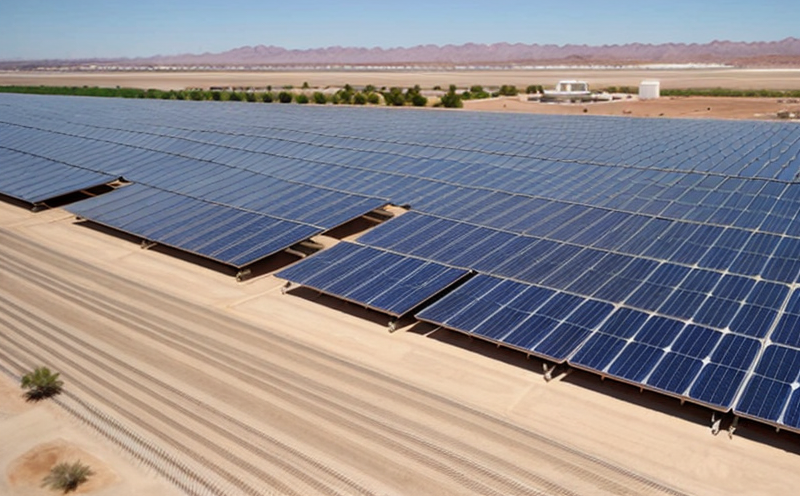EN ISO 9806 Collector Rain Penetration Testing
The EN ISO 9806 standard is a crucial component in ensuring the durability and performance of solar thermal collectors, particularly those used in Concentrated Solar Power (CSP) systems. This test evaluates the integrity of the collector’s insulation when subjected to rain penetration. It ensures that moisture cannot compromise the efficiency or lifespan of the collector, which is critical for reliable operation.
The standard specifies procedures and criteria for determining whether a solar thermal collector can withstand the ingress of water under simulated rainfall conditions. The test simulates real-world scenarios where collectors are exposed to rain, ensuring they meet the necessary performance requirements specified by international standards.
During this testing procedure, a specimen is subjected to a controlled spray that mimics natural rainfall. The apparatus used typically includes a pressure tank and a nozzle system capable of generating droplets similar to those found in nature. The test involves exposing the collector to a specified duration and intensity of simulated rain to assess its ability to prevent water from penetrating the insulation.
The acceptance criteria for this test are stringent, ensuring that any moisture ingress is minimal and does not affect the performance or integrity of the solar thermal collector. Compliance with these standards guarantees that the product meets rigorous quality benchmarks set by industry experts.
This testing methodology is widely used in the energy sector to ensure that CSP systems remain efficient and reliable under various environmental conditions. The test results provide critical insights into the durability and performance of collectors, allowing manufacturers to optimize their designs for better longevity and efficiency.
Why It Matters
The integrity of solar thermal collectors is paramount in ensuring reliable energy generation. Rain penetration can lead to several adverse effects on the performance of these systems, including reduced efficiency due to water accumulation and potential corrosion of internal components.
- Enhanced Reliability: Ensures that the collector remains operational under harsh weather conditions without compromising its structural integrity.
- Increased Efficiency: Prevents moisture from affecting the thermal performance, thereby maximizing energy output.
Why Choose This Test
Selecting EN ISO 9806 Collector Rain Penetration Testing is essential for several reasons. First and foremost, it ensures compliance with international standards that are recognized globally. Compliance helps in meeting regulatory requirements and gaining market acceptance.
- Global Recognition: The standard is widely accepted across various countries, ensuring consistent quality and performance.
- Market Access: Meeting these standards opens up markets and reduces the risk of non-compliance penalties.
Customer Impact and Satisfaction
The impact of this testing on customer satisfaction is significant. By ensuring that solar thermal collectors meet stringent quality benchmarks, customers can expect reliable performance from their CSP systems. This leads to reduced downtime, lower maintenance costs, and increased energy production.
- Increased Customer Confidence: Compliance with international standards instills confidence in the product's reliability and longevity.
- Better ROI: By ensuring efficient performance, customers can achieve a higher return on investment through reduced operational costs.





